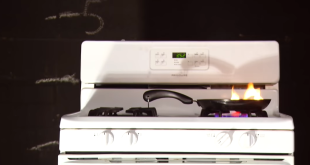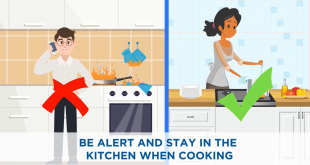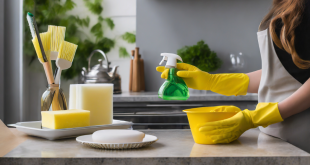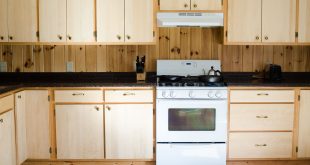Kitchen safety is crucial for preventing accidents. Follow these 10 basic kitchen safety tips to ensure a safe cooking environment.
The kitchen is the heart of the home, but it can also be a place where accidents happen. Whether you’re a seasoned chef or a novice cook, it’s important to be mindful of safety practices in the kitchen. By following some basic kitchen safety tips, you can reduce the risk of injury and ensure a safe and enjoyable cooking experience.
From proper handling of knives and hot surfaces, to preventing foodborne illnesses and fires, these tips cover all aspects of kitchen safety. Let’s delve into the 10 basic kitchen safety tips that you should keep in mind to create a secure cooking environment for yourself and your loved ones.
Understanding Kitchen Hazards
Identifying Potential Risks
Kitchen safety is of utmost importance to prevent accidents and injuries. Before diving into the basic kitchen safety tips, it’s crucial to understand the potential hazards that can occur in the kitchen. Identifying these risks will help in implementing effective safety measures.
Importance Of Kitchen Safety
Kitchen safety is essential for preventing accidents, injuries, and fires. By being aware of potential hazards and following safety guidelines, you can create a secure environment in the kitchen for yourself and your loved ones. Maintaining kitchen safety also ensures the longevity of kitchen equipment and minimizes the risk of food contamination.
Essential Guidelines For Safe Cooking
When it comes to cooking, safety should always be a top priority. By following basic kitchen safety tips, you can ensure a safe and enjoyable cooking experience. Let’s take a look at some essential guidelines for safe cooking to help you create a secure environment in your kitchen.
Proper Handling Of Knives
Proper knife handling is crucial to prevent accidents. Follow these safety precautions when using knives in the kitchen:
- Keep your knives sharp to reduce the risk of slipping.
- Always use a cutting board to protect your countertop and maintain stability.
- When not in use, store knives in a knife block or other secure storage to prevent injuries.
Remember to cut away from yourself and use the appropriate knife for the task at hand to avoid accidents.
Preventing Burns And Scalds
Burns and scalds are common in the kitchen, but they can be prevented by following these safety measures:
- Use oven mitts or pot holders when handling hot cookware or bakeware.
- Take extra caution when working with hot liquids to avoid splashes and spills.
- Keep flammable items, such as kitchen towels and paper towels, away from the stovetop.
By being aware of potential sources of heat and taking precautions, you can minimize the risk of burns and scalds in the kitchen.
Electrical Safety In The Kitchen
Electrical safety is paramount in the kitchen to prevent accidents and fires. Follow these guidelines:
- Regularly check cords and plugs for any signs of damage or wear, and replace them if necessary.
- Avoid overloading electrical outlets with too many appliances at once.
- Be cautious when using electrical appliances near water sources to prevent electric shocks.
By taking these necessary precautions, you can ensure electrical safety in your kitchen and minimize the risk of accidents related to electricity.
Hygiene And Food Safety Practices
Hygiene and food safety practices are critical aspects of maintaining a healthy kitchen environment. Whether you’re a seasoned chef or just starting out, adhering to proper hygiene and food safety practices is essential. From handwashing to food storage, these measures not only protect you and your family from foodborne illnesses but also ensure the flavors and quality of your dishes remain uncompromised.
Importance Of Handwashing
Effective handwashing is the first line of defense against foodborne illnesses. Proper handwashing involves lathering your hands with soap and water for at least 20 seconds, ensuring you wash the backs of your hands, between your fingers, and under your nails. This simple act significantly reduces the spread of harmful bacteria and viruses from your hands to the food you handle.
Cleaning Kitchen Surfaces And Utensils
Keeping your kitchen surfaces and utensils clean is paramount to preventing cross-contamination. Use a mild detergent and hot water to clean cutting boards, countertops, and utensils after each use. Additionally, sanitize these surfaces routinely to eliminate any lingering bacteria and viruses that might compromise food safety.
Safe Food Storage Tips
Proper food storage is crucial for maintaining food quality and safety. Utilize airtight containers to store leftover food in the refrigerator and ensure raw meats are stored separately from cooked foods to prevent cross-contamination. Label and date items in your fridge and pantry to easily keep track of food freshness and prevent the consumption of expired items.
Fire Safety Measures
Kitchen safety is essential in preventing fires. Follow these 10 basic tips to maintain a safe kitchen environment: keep flammable items away from heat sources, never leave cooking unattended, and have a fire extinguisher within reach. Regularly maintain kitchen appliances and install smoke detectors for added protection.
How To Prevent Kitchen Fires
Preventing kitchen fires requires vigilance and awareness. Some basic tips to prevent fires include keeping flammable items away from the stove, ensuring cleanliness of exhaust fans and vents, and not leaving the kitchen unattended while cooking.
Using A Fire Extinguisher
Having a functional fire extinguisher within easy reach in the kitchen is crucial. Learning how to properly operate a fire extinguisher is also important. In case of a fire, remember the PASS technique: Pull, Aim, Squeeze, and Sweep.
Creating An Evacuation Plan
Having an evacuation plan in place is essential for dealing with kitchen fires. Make sure everyone in the household knows the emergency exit routes and designated meeting points outside the house. Practice the evacuation plan regularly to ensure everyone is prepared in case of a fire.
Child Safety In The Kitchen
Having children in the kitchen can be a fun and educational experience, but it’s important to prioritize safety. By taking measures to create a child-safe kitchen environment, teaching kids about kitchen hazards, and childproofing kitchen appliances, you can ensure a secure and enjoyable cooking space for the whole family.
Creating A Child-safe Kitchen Environment
When it comes to child safety in the kitchen, creating a safe environment is key. Here are some measures to consider:
- Install safety latches on cabinets and drawers to keep hazardous items out of reach.
- Use stove guard to prevent access to hot surfaces.
- Store cleaning products, sharp utensils, and small appliances on high shelves or in locked cabinets.
- Place non-slip mats under rugs to prevent slips and falls.
Teaching Kids About Kitchen Hazards
It’s important to educate children about the potential dangers in the kitchen. Consider implementing the following teaching methods:
- Explain the concept of hot surfaces and the risk of burns.
- Demonstrate safe handling of knives and other sharp objects.
- Teach children to identify and avoid electrical hazards.
- Emphasize the importance of not playing with kitchen appliances or climbing on countertops.
Childproofing Kitchen Appliances
Childproofing kitchen appliances is crucial for preventing accidents. Here are some steps to childproof common kitchen appliances:
| Appliance | Childproofing Method |
|---|---|
| Stove/Oven | Use stove knob covers and stove guard to prevent access to hot surfaces. |
| Refrigerator | Install appliance locks to prevent children from opening the fridge and accessing potentially hazardous items. |
| Microwave | Place a microwave lock to restrict access when not in use. |
Frequently Asked Questions Of 10 Basic Kitchen Safety Tips
What Are The Essential Kitchen Safety Tips?
In the kitchen, always wash your hands before handling food, keep appliances clean, and use separate cutting boards for raw meat and produce. Remember to check expiration dates on products and keep flammable items away from heat sources.
How Can I Prevent Burns And Scalds In The Kitchen?
To prevent burns and scalds, handle hot pans with pot holders, turn pot handles away from the stove’s edge, and use caution when removing lids from hot foods. Additionally, keep children and pets away from the cooking area and never leave hot items unattended.
What Are The Best Practices For Preventing Foodborne Illnesses?
To prevent foodborne illnesses, refrigerate perishable items promptly, cook foods to their proper temperatures, and avoid cross-contamination by using separate utensils and cutting boards for raw and cooked foods. Wash fruits and vegetables thoroughly before consumption.
Conclusion
Practicing kitchen safety is essential to prevent accidents and injuries. By following these basic tips, you can create a safe and secure environment in your kitchen for you and your family. With mindfulness and attention to detail, you can enjoy cooking while minimizing the risk of mishaps.
Stay safe and happy cooking!
 Support Home Optimize Home Life With Expert Support
Support Home Optimize Home Life With Expert Support





